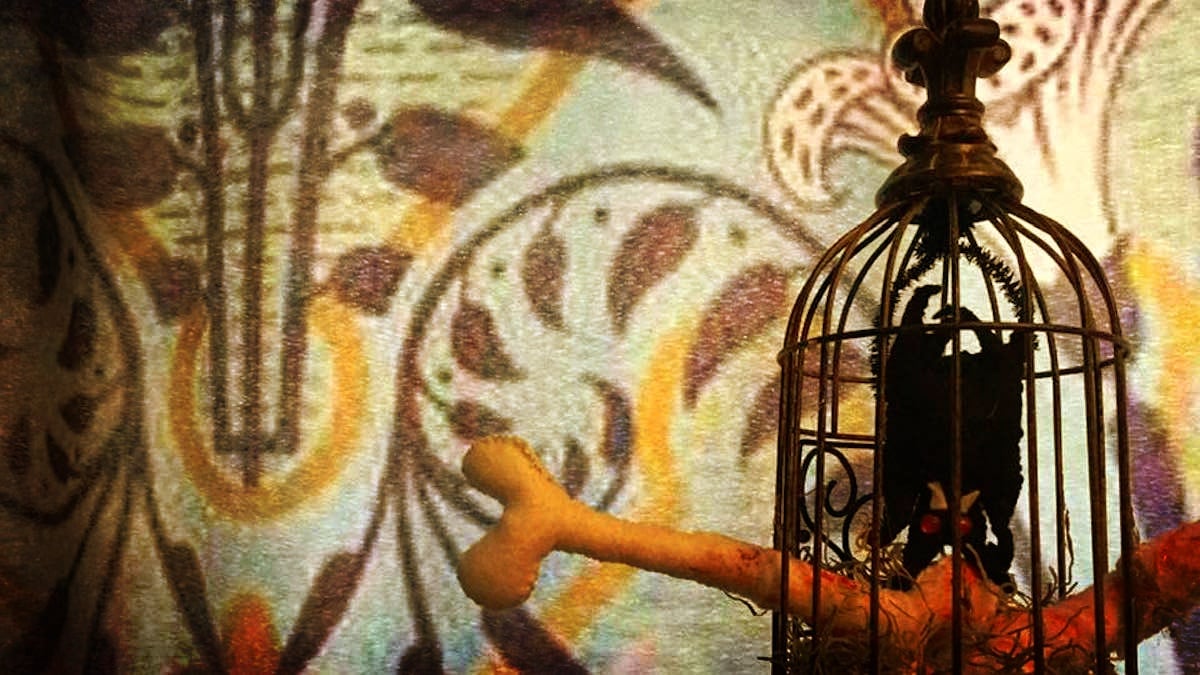
The Artist: Grandma Moses
Most people might not know painter Anna Mary Robertson, but they know Grandma Moses (Robertson’s nome d’arte) as one of the most influential folk artists of the Twentieth Century.
Moses was born in 1860 in Greenwich, New York, and spent most of her life working on farms. She was one of 10 children, educated in a one-room schoolhouse (where she discovered she loved painting), and left home at 12 to work for a wealthy families doing chores on their farm. One family, who noticed her interest in some Currier & Ives prints in their home, even purchased her some crayons and chalk.
She met her husband, Thomas Moses, at age 27 when they were both working on the same farm. They spent their first 20 years of marriage working on four different farms, while Moses made potato chips and butter for extra income. They were eventually able to purchase their own farm. This wasn’t an easy life. The couple had 10 children, but five of them died in infancy.
In 1927, after 40 years of marriage, Thomas passed away. By the mid 1930s Moses was devoting much of her time to the peaceful pastime of painting, as arthritis was preventing her from doing embroidery. She concentrated on images of rural life, from everyday events and chores to seasonal holidays, and her works were filled with activity and motion. In 1938 an art collector ran across her work, and in her late 70s Grandma Moses began her new life as a soon-to-be world famous artist.
She was often known as “Mother Moses,” “Mrs. Moses,” and what eventually became her most famous moniker, “Grandma Moses.”

She didn’t start painting until late in life, but this doesn’t mean she didn’t enjoy a good run as an artist. During her career she created more than 1,500 works of art, wrote an autobiography, won several awards, and received two honorary doctorates.
On her 100th birthday, New York Governor Nelson Rockefeller declared Sept. 7, 1960 “Grandma Moses Day,” and played piano for this influential artist. Her health was already declining, however, and she for lived a little more than a year, passing away in December of 1961 at age 101. In 2006, one of her most famous paintings, Sugaring Off, sold for $1.2 million. Not bad considering she sold her first paintings for around five bucks.
Her long life and successful art career reflected her charming, happy, and lively nature. This life philosophy was summed up in her autobiography, My Life’s History.
“I look back on my life like a good day’s work, it was done and I feel satisfied with it. I was happy and contented, I knew nothing better and made the best out of what life offered,” she said. “And life is what we make it, always has been, always will be.”
The Project: Grandma Moses visits….
Grandma Moses was what is known in the art world as a “primitive” or “naïve” artist which, in the simplest terms, is an artist with no formal art background. In other words, she was completely self-taught.
When she was a girl, she painted her earliest landscapes using lemon or grape juice and other natural materials from ground grass to sawdust.
Later, she would call her own work “old-timey” as she avoided depicting modern day features like tractors, cars, telephone poles, and other signs of present day life in her paintings.
Now, here’s the challenge: what if Grandma Moses visited a favorite fictional location, making sure to avoid any “modern touches?” Some places may be easier. She might visit a harvest dance in Hobbiton and be right at home. However, a garden party at Wayne Manor near Gotham City might need some dialing back of the time line. How about Gallifrey? Or Narnia?
As far as the painting technique, follow Grandma Moses’s own discipline of painting “from the top down.” She would start with the “sky, then the mountains, then the hills, then the houses, then the cattle, and then the people.”
This is an easy way to create a scene one simple step at a time. Use any medium you like, from watercolor to acrylic, or use more translucent colors for the background and brighter, more opaque colors for the figures and fore ground.
Paint straight to the canvas or paper, don’t draw it first.
Paint the sky and ground, as if there were just a big empty space. Add some natural features, as Grandma Moses did, like mountains, hills, trees, rivers, or streams.

Next, add the “man-made” features, like buildings, carts, barrels, tables, bridges, and anything else you feel captures the scene.
Finally, bring in some people and animals, (or orcs, white walkers, dinosaurs, dragons, or whatever your world needs), just as if you are adding figures to a playset. Don’t worry about overlapping what you already painted. That’s part of the action.

These steps will make it easier create an entire world without being overwhelmed and wondering where to start.
No matter where you think Grandma Moses visits, make sure there is some sort of activity, be it a battle, a wedding, or just the every day to-dos of an era.
Every place, every moment, every story, from comics to classics, can be filled with activity, be it peaceful and laid-back or frantic and frenzied. Just take a moment to relax, concentrate, and imagine that moment.
This is what Grandma Moses did, as she told Time Magazine in 1948:
“I look out the window sometimes to seek the color of the shadows and the different greens in the trees, but when I get ready to paint I just close my eyes and imagine a scene.”

GeekMom Lisa Tate’s Be The Artist summer family art series for 2016 focuses on American artists from the past and present.




